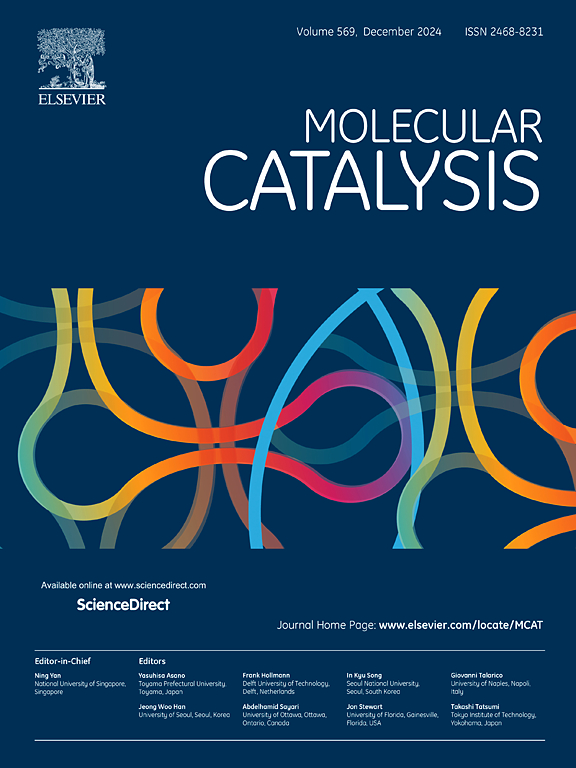手性亚砜-烯烃螯合铑络合物对1,4-不对称加成可调对映选择性的计算研究
IF 4.9
2区 化学
Q2 CHEMISTRY, PHYSICAL
引用次数: 0
摘要
本计算研究了用手性亚砜-烯烃杂化配体在铑催化下苯基硼酸与环己酮的不对称1,4加成反应的可调对映选择性。通过比较非手性烯烃取代基对映体碳基化过渡态的自由能差和用埋体积百分比量化的立体效应,阐明了非手性烯烃取代基及其位置变化在立体控制中的作用。结果表明,取代基位置和空间体积显著影响对映体选择性,使1,4加成产物构型通过配体结构修饰实现反转。一个修正的立体控制模型,对比先前的建议,强调了小构象异构体和手性口袋的几何变化的影响。计算结果还预测,用体积较大的1-金刚烷基取代叔丁基取代手性亚砜片段并没有提高选择性,强调了烯烃取代基的主导作用。这项工作为对映发散催化的配体设计提供了机制见解,强调了不对称合成中空间位阻和构象灵活性之间的相互作用。本文章由计算机程序翻译,如有差异,请以英文原文为准。

Computational investigation on tunable enantioselectivity of asymmetric 1,4-additions by chiral sulfoxide-olefin chelated rhodium complex
This computational study investigates the tunable enantioselectivity of rhodium-catalyzed asymmetric 1,4-additions of phenylboronic acids to cyclohexenone using chiral sulfoxide-olefin hybrid ligands. The roles of non-chiral alkene substituents and their positional variations in stereocontrol were elucidated by comparing the free-energy differences in enantio‑determining carborhodation transition states and quantifying the steric effect with the percentages of buried volume. The results revealed that substituent position and steric bulk significantly influenced enantioselectivity, enabling inversion of 1,4-addition product configuration through ligand structural modifications. A revised stereocontrol model, contrasting prior proposals, highlighted the impact of minor conformational isomers and geometric variation of the chiral pocket. The computational results also predicted that replacing the tert‑butyl substituent with the bulkier 1-adamantyl group in the chiral sulfoxide fragment did not enhance selectivity, underscoring the dominant role of alkene substituents. This work provides mechanistic insights into ligand design for enantiodivergent catalysis, emphasizing the interplay between steric hindrance and conformational flexibility in asymmetric synthesis.
求助全文
通过发布文献求助,成功后即可免费获取论文全文。
去求助
来源期刊

Molecular Catalysis
Chemical Engineering-Process Chemistry and Technology
CiteScore
6.90
自引率
10.90%
发文量
700
审稿时长
40 days
期刊介绍:
Molecular Catalysis publishes full papers that are original, rigorous, and scholarly contributions examining the molecular and atomic aspects of catalytic activation and reaction mechanisms. The fields covered are:
Heterogeneous catalysis including immobilized molecular catalysts
Homogeneous catalysis including organocatalysis, organometallic catalysis and biocatalysis
Photo- and electrochemistry
Theoretical aspects of catalysis analyzed by computational methods
 求助内容:
求助内容: 应助结果提醒方式:
应助结果提醒方式:


